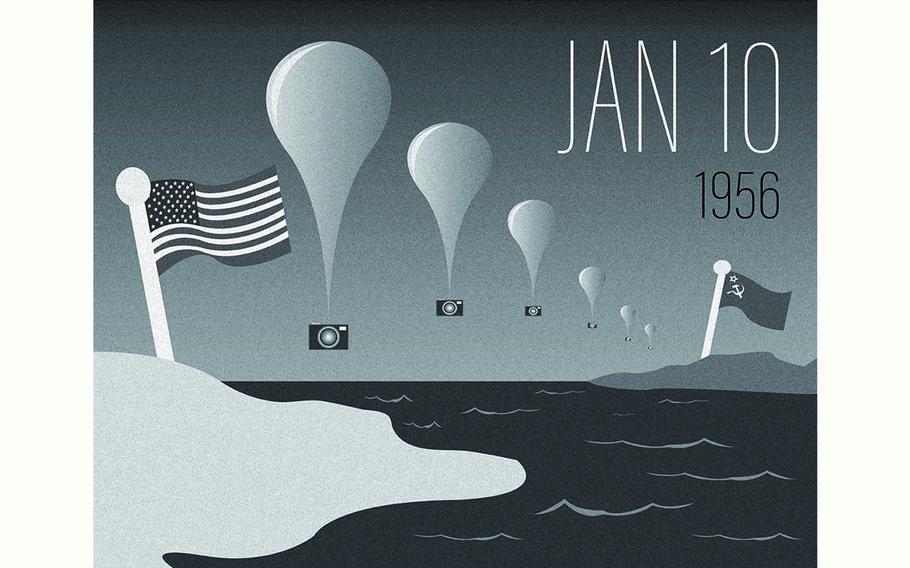In a world of advanced surveillance technology, including drones and satellites, why on Earth would a country use a balloon for spying?
That was the question on everyone’s mind this week after U.S. defense officials accused China of flying a high-altitude surveillance balloon over the continental United States, prompting Secretary of State Antony Blinken to postpone his trip to China. China has denied the balloon was used for spying, saying it was used for scientific research and was accidentally knocked off course by westerly winds.
A U.S. military aircraft downed the balloon just off the Atlantic Coast, near the Carolinas, on Saturday.
Despite the furor, spy balloons are actually not that unusual. According to U.S. officials, they have been spotted over U.S. territory a number of times in recent years. Both U.S. and U.K. militaries have also made inquiries about high-altitude balloons.
But it’s only in the past 10 years or so that military attention has returned to balloons, according to Michael Clarke, a visiting professor at the Department of War Studies at King’s College London, “because they see how useful they are, or can be.”
“Balloons offer a few advantages over the use of satellites or drones,” James Rogers, an academic at Cornell and the University of Southern Denmark, who advises the U.N. Security Council on the transnational threat of drones, said in an email.
“Not only are they cheaper than launching satellites into space, but by operating within the bounds of the earth’s atmosphere, closer to the surface, they can obtain better quality images,” he added. The latest generation of balloons are high-tech in their own right, “envisaged as systems that can fly up to 90,000 feet” high, “deploy their own drone systems” and detect incoming missiles.
Balloons can soar above the range of most planes, Clarke said, and their slow speed means they aren’t always picked up by radar. Additional technology or paint can help to conceal them further.
Balloons also have an advantage over satellites because they are more maneuverable, according to Malcolm Macdonald, a professor and space technology engineer from the University of Strathclyde in Scotland. “The motion of a satellite is very predictable, a balloon (or other aircraft) offers the chance for an unexpected overflight, to catch those you are observing by surprise,” Macdonald said in an email. “You might hope to get something you might not see, or hear, from space.”
Satellites can provide high-resolution imagery, Clarke said — but balloons can stay over one area for longer periods than satellites, if the weather permits.
There’s also the cost benefit: a satellite may cost up to $300 million over its lifetime, according to an estimate from 2020; even the most high-tech balloon would be cheaper.
Macdonald, the professor from the University of Strathclyde, said that “a balloon is very difficult to see on radar, although the sensor bay underneath will be more visible.”
U.S. officials on Thursday announced they had been tracking the balloon for a couple of days but waited to shoot it down until Saturday, citing concerns about the potential for debris to hit people or property on the ground.
Concern about revealing defense capabilities might also have factored into the delay, Macdonald said.
“Had they reacted sooner it would have confirmed to the Chinese that U.S. air defenses had seen it,” he said of U.S. authorities. “If you know where it is, you can mitigate any risk it poses. But, if you shoot it down you might expose an offensive capability you would rather keep secret.”
Shooting down balloons has proved difficult in the past. In 1998, for example, Canadian, British and U.S. fighter jets unsuccessfully attempted to shoot down a rogue weather balloon that had forced passenger flights to divert.
The U.S. military had better luck this time: Fighter aircraft, acting on an order from President Biden, downed the Chinese surveillance balloon off the South Carolina coast on Saturday afternoon.
The repercussions of the action remain to be seen. But shooting down another nation’s satellite would be both more challenging and possibly herald an arms race in space or worse.
The presence of another suspected balloon over Latin America only strengthens Washington’s case that the balloons were dispatched deliberately, Clarke said.
Steve Tsang, the director of the China Institute at the University of London’s School of Oriental and African Studies, argued that any spy balloon would probably be of “symbolic value, showing that the Chinese are able to send something in the air to survey U.S. military installations.”
“They’re doing it because for decades the U.S. [has] been sending spy planes along the Chinese coast and sometimes over Chinese airspace to monitor the Chinese in ways that they couldn’t do very much about,” he said. “And now they can, so they are.”
The Washington Post’s Claire Parker contributed to this report.

In 1956, balloons were an important and strategic part of U.S. military capabilities.
At that time, the U.S. Air Force designed a program known as Project Genetrix to launch surveillance balloons over Communist China, Eastern Europe and the Soviet Union to take aerial photographs and collect intelligence. (Kevin Long/U.S. Air Force)